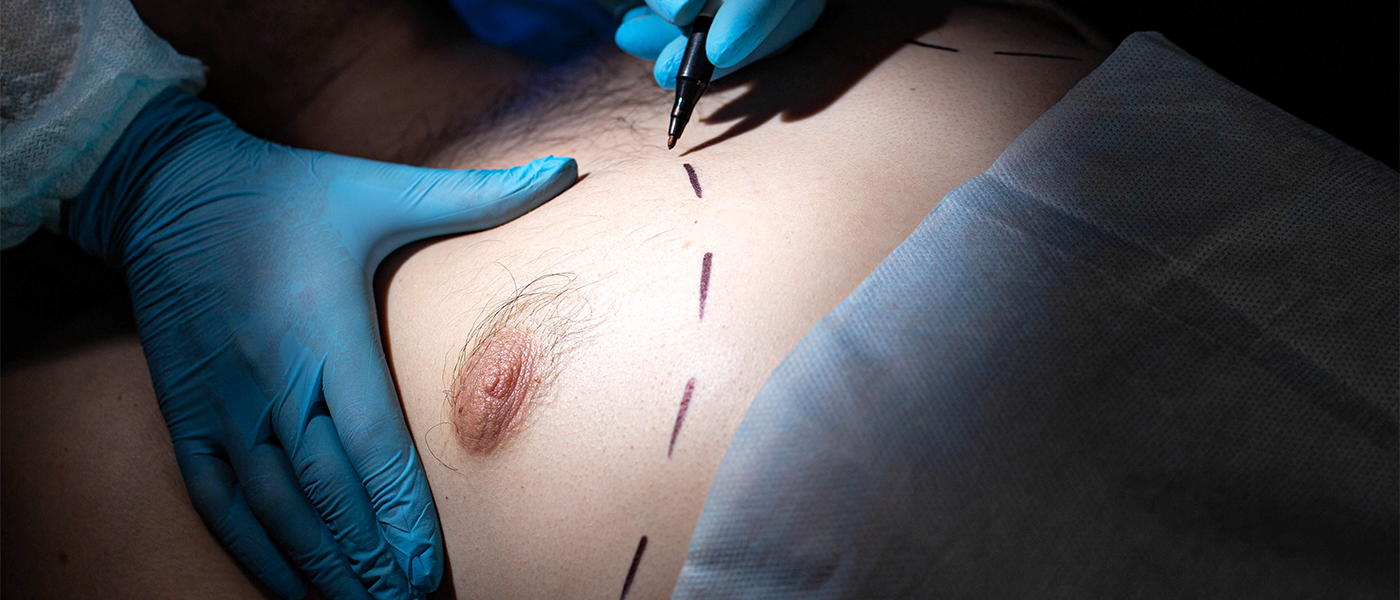
Gynecomasty is a condition characterized by men's enlargement of breast tissue.
This condition can arise due to various factors such as hormonal imbalances, medication side effects, and certain health problems. Gynaecomastia surgery aims to reduce the size of the male breast and provide a more typical breast appearance. This procedure can be surgical or non-surgical, depending on the severity of the condition and the patient's preferences.
Hormones play a significant role in the development of gynecomastia. An imbalance between estrogen and testosterone levels can lead to the enlargement of breast tissue in men. This condition commonly occurs during adolescence but can also appear in older individuals as testosterone levels naturally decrease.
Certain medications can also cause gynecomastia as a side effect. Drugs used in the treatment of prostate cancer, anabolic steroids, and some anti-anxiety medications can disrupt hormonal balance, leading to breast tissue growth. Various health issues, such as liver disease, kidney failure, and hyperthyroidism, can contribute to the development of gynecomastia. These conditions usually affect the body's hormone levels, creating an environment conducive to breast tissue growth.
The main symptom of gynaecomastia is a noticeable enlargement of breast tissue. This condition may also accompany tenderness, swelling, and sometimes discharge from the nipples. It is essential to distinguish gynaecomastia from fat accumulation due to obesity, as the treatment methods differ. Diagnosing gynaecomastia requires a thorough medical examination, including blood tests and imaging studies such as mammography or ultrasound. These tests help determine the underlying cause and severity of the condition, guiding appropriate treatment options.
In mild cases, non-surgical methods such as hormone therapy or lifestyle changes can be effective. Medications that adjust hormone levels or treatments like cold compresses and compression garments can help reduce symptoms. Surgical options include liposuction, excision, or a combination of both. Liposuction removes excess fat, while excision surgery removes glandular breast tissue and excess skin. The choice of procedure depends on the patient's specific condition and desired outcomes.
After gynecomastia surgery, patients are monitored in a recovery area before being discharged. Following the surgeon's instructions regarding rest, activity levels, and wound care is crucial to promote healing and prevent complications. Complete recovery is achieved through a gradual return to normal activities and adherence to a healthy lifestyle. Regular follow-up appointments with the specialist are important to monitor the healing process and address any concerns.
Post-surgery, most patients notice an immediate improvement in the contour of their chest. Initial swelling and bruising, which are common, usually subside within a few weeks, revealing the final results. Regular exercise and a balanced diet play a significant role in maintaining the results of the surgery.
Many patients who undergo gynecomastia surgery report significant improvements in their self-confidence and quality of life. Patient testimonials often highlight the transformative effect of gynecomastia surgery. Reading these stories can be encouraging and help prospective patients form realistic expectations. For more detailed information on gynecomasty surgery costs and procedures, you can contact EMPCLINICS.
Recurrence is rare but possible, especially due to hormonal imbalances or weight gain.
The surgery is performed under anesthesia, so there is no pain during the procedure. Post-operative discomfort can be easily managed with medication.
Yes, the results are generally permanent as long as a stable weight is maintained and a healthy lifestyle is followed.